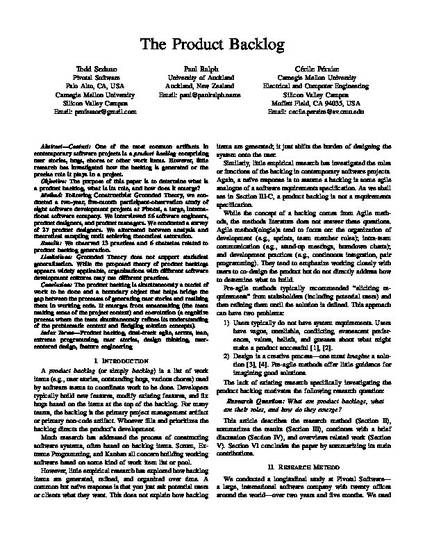
Article
The Product Backlog
41st International Conference on Software Engineering, ICSE ’19
(2019)
Abstract
Context: One of the most common artifacts in contemporary software projects is a product backlog comprising user stories, bugs, chores or other work items. However, little research has investigated how the backlog is generated or the precise role it plays in a project. Objective: The purpose of this paper is to determine what is a product backlog, what is its role, and how does it emerge? Method: Following Constructivist Grounded Theory, we conducted a two-year, five-month participant-observation study of eight software development projects at Pivotal, a large, international software company. We interviewed 56 software engineers, product designers, and product managers. We conducted a survey of 27 product designers. We alternated between analysis and theoretical sampling until achieving theoretical saturation. Results: We observed 13 practices and 6 obstacles related to product backlog generation. Limitations: Grounded Theory does not support statistical generalization. While the proposed theory of product backlogs appears widely applicable, organizations with different software development cultures may use different practices. Conclusion: The product backlog is simultaneously a model of work to be done and a boundary object that helps bridge the gap between the processes of generating user stories and realizing them in working code. It emerges from sensemaking (the team making sense of the project context) and coevolution (a cognitive process where the team simultaneously refines its understanding of the problematic context and fledgling solution concepts).
Disciplines
Publication Date
May, 2019
Citation Information
Todd Sedano, Paul Ralph and Cécile Péraire. "The Product Backlog" 41st International Conference on Software Engineering, ICSE ’19 (2019) Available at: http://works.bepress.com/cecile_peraire/43/
